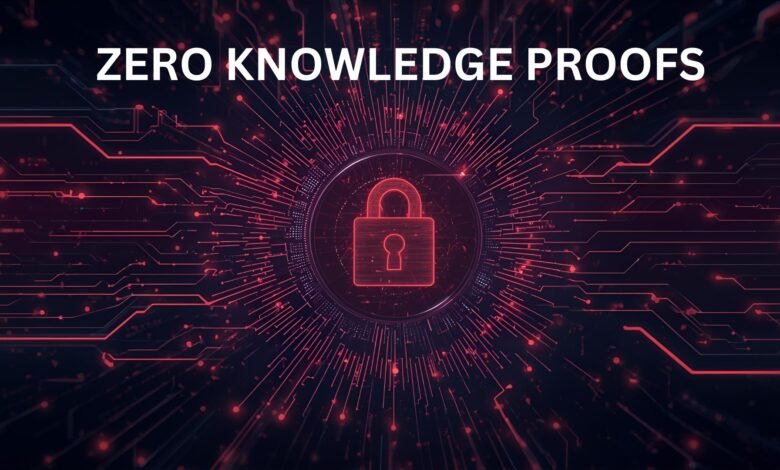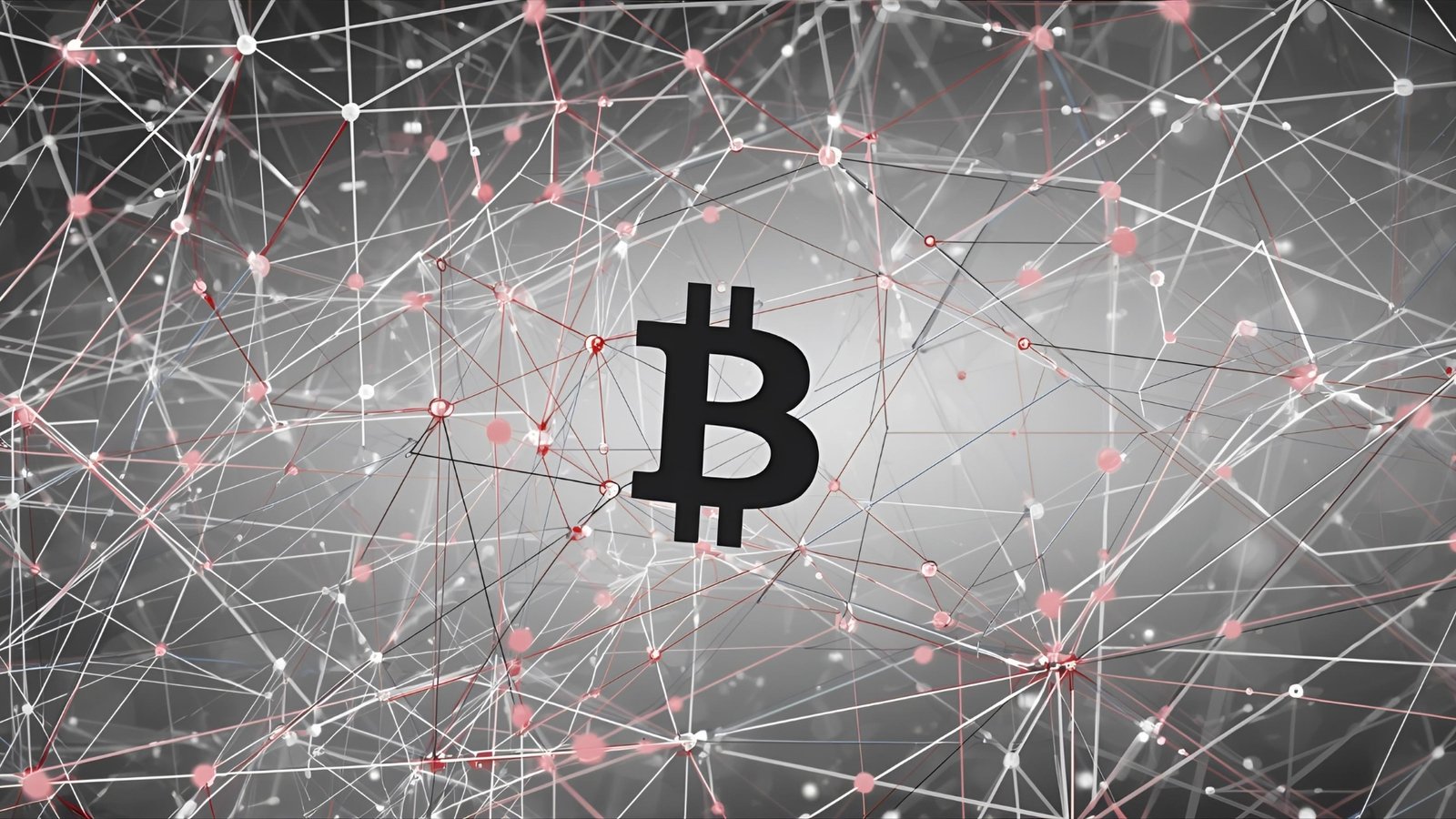
The blockchain industry has long wrestled with a fundamental paradox that threatens its very foundation. As networks grow and adoption increases, the systems designed to democratize finance and data become increasingly congested, expensive, and sluggish. Zero Knowledge Proofs: Bitcoin processes roughly seven transactions per second, while Ethereum manages approximately fifteen, numbers that pale in comparison to traditional payment processors handling thousands of transactions in the same timeframe. Yet amid this scalability crisis, a mathematical breakthrough originally conceived in 1985 has emerged as blockchain’s most promising solution: zero-knowledge proofs.
These cryptographic protocols are revolutionizing how blockchain networks achieve the seemingly impossible trifecta of scalability, security, and decentralization. Unlike previous attempts that sacrificed one attribute to enhance another, zero-knowledge proof technology creates a paradigm where networks can process thousands of transactions while maintaining ironclad security and preserving the decentralized ethos that defines blockchain philosophy. This isn’t incremental improvement—it’s a fundamental reimagining of how distributed ledgers can operate at scale without compromise.
Zero-Knowledge Proofs: The Foundation of Blockchain’s Future
Before examining how zero-knowledge proofs transform blockchain scalability, we must understand what makes this cryptographic innovation so revolutionary. At its core, a zero-knowledge proof allows one party to prove they possess certain information to another party without revealing the actual information itself. Imagine proving you know the solution to a complex puzzle without showing your work or even the answer—that’s the essence of ZK technology.
The mathematical elegance behind zero-knowledge proofs rests on three fundamental properties that make them uniquely suited for blockchain applications. First, completeness ensures that if a statement is true, an honest verifier will be convinced by an honest prover. Second, soundness guarantees that if a statement is false, no cheating prover can convince the verifier except with negligible probability. Third, and most remarkably, the zero-knowledge property ensures that the verifier learns nothing beyond the validity of the statement itself.
These properties create unprecedented opportunities for blockchain networks seeking to overcome the notorious blockchain trilemma. Traditional scaling solutions often required users to trust centralized validators or accept reduced security guarantees. Zero-knowledge proofs shatter this compromise by enabling cryptographic verification that maintains decentralization while dramatically increasing throughput. The implications extend far beyond simple transaction processing—they fundamentally alter what’s possible in decentralized systems.
The Scalability Crisis: Why Blockchain Networks Need Zero-Knowledge Solutions
The scalability challenges facing blockchain technology aren’t merely technical inconveniences—they represent existential threats to mainstream adoption. When Ethereum network congestion peaked during the NFT boom of 2021, transaction fees soared to hundreds of dollars for simple operations. Users attempting to transfer tokens or interact with smart contracts faced wait times measured in hours, not seconds. These conditions make blockchain technology impractical for everyday use cases that demand speed and affordability.
The root cause of these scalability limitations lies in blockchain’s fundamental design. Every node in a decentralized network must process every transaction, verify every computation, and store the complete transaction history. This redundancy ensures security and decentralization but creates an inherent bottleneck. As transaction volume increases, the computational burden on each node grows proportionally, leading to network congestion and elevated fees. Traditional databases don’t face these constraints because they rely on centralized architecture—but centralization contradicts blockchain’s core value proposition.
Previous scaling attempts have produced mixed results at best. Layer 1 solutions like increasing block size or reducing block time offer marginal improvements but risk centralizing networks by raising hardware requirements for validators. Sidechains and plasma chains introduce their own security assumptions and complexity. State channels work well for specific use cases but struggle with general-purpose applications. The blockchain industry desperately needed a solution that could deliver massive scalability gains without compromising the security and decentralization that give distributed ledger technology its unique value.
ZK-Rollups: Bundling Thousands of Transactions Into Cryptographic Proof
Enter ZK-rollups, the first pillar of zero-knowledge proof’s scalability trifecta. These layer 2 scaling solutions represent perhaps the most practical application of zero-knowledge technology in blockchain today. ZK-rollups work by executing transactions off the main blockchain while posting compressed transaction data and cryptographic proofs on-chain. Instead of the main network processing each transaction individually, it only needs to verify a single proof that confirms the validity of potentially thousands of bundled transactions.
The efficiency gains are staggering. A single zero-knowledge proof can validate an entire batch of transactions using only a fraction of the computational resources required to process them individually. Ethereum-based ZK-rollups like zkSync and StarkNet have demonstrated the ability to process over 2,000 transactions per second while reducing transaction costs by more than 90% compared to layer 1 operations. These aren’t theoretical projections—they’re real-world results achieved in production environments serving millions of users.
What makes ZK-rollups particularly elegant is how they maintain security guarantees equivalent to the underlying blockchain. Unlike optimistic rollups that assume transactions are valid unless challenged, ZK-rollups provide mathematical certainty. The cryptographic proof either verifies correctly or it doesn’t—there’s no trust assumption, no challenge period, and no possibility of invalid state transitions being accepted. This security model means users can withdraw funds immediately without waiting days for fraud proofs to expire, creating a user experience that feels instant while preserving the security properties that make blockchain trustworthy.
The architecture of ZK-rollups also solves the data availability problem that plagues other scaling solutions. By posting transaction data on the main chain in compressed form, ZK-rollups ensure anyone can reconstruct the complete state even if the rollup operator disappears. This data availability guarantee means ZK-rollup systems inherit the censorship resistance and permissionless nature of their underlying blockchain. Users maintain sovereignty over their assets without depending on the continued operation or honesty of any centralized party.
Recursive Proofs: Scaling the Scalers Through Mathematical Innovation
The second pillar of the scalability trifecta emerges from a remarkable property of certain zero-knowledge proof systems: recursion. Recursive proofs allow one proof to verify the validity of other proofs, creating a nested structure where a single compact proof can represent the verification of numerous other proofs. Think of it as mathematical compression—each layer of recursion dramatically reduces the verification burden while maintaining complete cryptographic certainty about the underlying computations.
This recursive capability unlocks exponential scaling potential. A ZK-rollup might batch 1,000 transactions into a single proof. A recursive layer could then aggregate 1,000 of those proofs into one meta-proof. Another recursive layer could aggregate 1,000 meta-proofs, representing one million transactions verified by a single cryptographic proof. The verification cost remains constant regardless of how many recursive layers are stacked, while the number of transactions represented grows multiplicatively. This mathematical property suggests theoretical throughput limits measured in millions of transactions per second.
Projects like Polygon Hermez and Scroll are pioneering recursive proof technology in production environments. These systems leverage advanced cryptographic techniques like proof aggregation to create hierarchical structures where multiple rollups can combine their proofs into a single submission to the main chain. The result is a scalability architecture that grows organically with demand—as more rollups join the ecosystem, they share the fixed cost of main chain verification across an expanding transaction base, making each transaction progressively cheaper.
Recursive proofs also enable novel cross-rollup communication patterns that were previously impossible. When multiple ZK-rollups can prove their state transitions within the same recursive proof framework, they can interact with minimal latency and without requiring transactions to touch the main chain. This creates the possibility of an interconnected ecosystem of specialized rollups—one optimized for decentralized finance, another for gaming, a third for social applications—all communicating seamlessly while settling their proofs collectively. The vision resembles an internet of blockchains, but with cryptographic guarantees replacing trust assumptions.
Privacy-Preserving Computation Hidden Third Pillar:Zero Knowledge Proofs
While ZK-rollups and recursive proofs address transaction throughput, the third pillar of the scalability trifecta focuses on a different dimension: computational privacy. Zero-knowledge proofs enable parties to prove they executed computations correctly without revealing the inputs, outputs, or intermediate steps of those computations. This capability seems primarily oriented toward privacy, but it has profound implications for scalability in ways that aren’t immediately obvious.
Consider that many blockchain computations today must be public for verification purposes, even when privacy would be preferable. Decentralized finance applications expose trading strategies, wallet balances, and financial relationships to anyone observing the blockchain. This transparency creates competitive disadvantages for traders, privacy concerns for users, and practical limitations on what applications can be built. When every computation must be public, certain use cases simply can’t exist on blockchain infrastructure—no corporation will put proprietary business logic on a transparent ledger.
Zero-knowledge proof technology breaks this constraint by separating verification from execution visibility. A smart contract can prove it calculated the correct result of a complex financial transaction without revealing the transaction details. An identity system can prove user credentials meet certain criteria without disclosing the credentials themselves. A voting mechanism can prove the correct tabulation of private votes without compromising ballot secrecy. Each of these applications becomes feasible on blockchain when zero-knowledge properties protect sensitive data while maintaining verifiability.
The scalability connection becomes clear when we recognize that privacy requirements often push applications toward centralized solutions precisely because public blockchains can’t accommodate confidentiality. By enabling private computation on decentralized networks, zero-knowledge proofs expand the total addressable market for blockchain technology. Applications that previously required centralized databases can now migrate to decentralized infrastructure, increasing overall blockchain utilization while distributing that usage across specialized privacy-preserving protocols. This isn’t just scaling existing blockchain use cases—it’s unlocking entirely new categories of applications that scale the ecosystem’s relevance.
The Technical Architecture: How ZK Proofs Actually Work
Understanding the practical implementation of zero-knowledge proofs in blockchain systems requires examining the underlying cryptographic primitives that make this technology possible. Modern ZK systems primarily rely on two proof systems: zk-SNARKs (Zero-Knowledge Succinct Non-Interactive Arguments of Knowledge) and zk-STARKs (Zero-Knowledge Scalable Transparent Arguments of Knowledge). Each offers distinct trade-offs between proof size, verification time, and security assumptions.
ZK-SNARKs produce extremely compact proofs—typically just a few hundred bytes—that can be verified quickly with minimal computational resources. This efficiency makes them ideal for blockchain applications where on-chain storage and verification costs directly impact feasibility. However, zk-SNARKs require a trusted setup ceremony where initial cryptographic parameters are generated. If the randomness used in this setup is compromised, it could theoretically be used to create false proofs. While multi-party computation ceremonies can mitigate this risk, it remains a consideration for security-critical applications.
ZK-STARKs eliminate the trusted setup requirement by using collision-resistant hash functions as their only cryptographic assumption. This makes them quantum-resistant and arguably more secure than SNARK systems. The trade-off comes in proof size—STARKs generate proofs that are significantly larger, though still far more compact than the raw transaction data they represent. For blockchain applications, this means higher on-chain storage costs but stronger security guarantees. Projects like StarkNet have pioneered STARK technology in production, demonstrating that the size overhead is acceptable given the security benefits.
Beyond these two primary systems, researchers continue developing hybrid approaches that combine the advantages of multiple proof systems. Proof composition allows a system to use STARKs for proving transaction validity and then wrap those proofs in SNARKs for efficient on-chain verification. This layered approach creates systems that are both secure and efficient, leveraging the optimal proof system for each stage of the verification pipeline. The result is a blockchain infrastructure that can scale dramatically while maintaining or even enhancing security properties.
Real-World Implementation: ZK Technology in Production
The theoretical promise of zero-knowledge proofs has materialized into production systems serving real users and processing significant transaction volumes. Ethereum’s Layer 2 ecosystem has become the primary proving ground for ZK technology, with multiple ZK-rollup implementations competing to offer the best combination of performance, developer experience, and feature completeness. These aren’t experimental prototypes—they’re battle-tested systems securing billions of dollars in user assets.
zkSync Era, developed by Matter Labs, represents one of the most mature ZK-rollup deployments. The network processes hundreds of thousands of daily transactions at a fraction of Ethereum mainnet costs while maintaining EVM compatibility that allows developers to deploy existing smart contracts with minimal modifications. The system uses zk-SNARKs to generate validity proofs for batched transactions, achieving throughput that exceeds 2,000 transactions per second during peak usage. Users experience confirmation times measured in seconds rather than minutes, with transaction fees typically under one dollar regardless of network congestion.
StarkNet takes a different architectural approach, using zk-STARKs and a custom virtual machine optimized for proof generation. This design choice sacrifices some EVM compatibility for enhanced performance and security properties. The network supports complex decentralized applications including automated market makers, lending protocols, and NFT marketplaces—all operating at scales impossible on Ethereum’s base layer. StarkNet’s Cairo programming language enables developers to write provable programs natively, creating applications designed from the ground up to leverage zero-knowledge properties rather than adapting existing code.
Polygon zkEVM prioritizes developer experience by providing complete EVM equivalence—existing Ethereum contracts work without modification, development tools function identically, and the user experience mirrors mainnet Ethereum except for dramatically reduced costs and latency. This approach lowers the barrier for projects migrating to Layer 2 solutions and creates network effects where the entire Ethereum developer ecosystem can immediately target zkEVM. The system demonstrates that ZK technology has matured beyond specialized applications to become a general-purpose infrastructure suitable for any blockchain use case.
Challenges and Limitations: What ZK Technology Still Needs to Overcome
Despite remarkable progress, zero-knowledge proof technology faces meaningful challenges that must be addressed for universal adoption. Proof generation remains computationally intensive, requiring specialized hardware and significant electricity to produce the cryptographic proofs that enable scalability. While proof verification is efficient, the generation side creates centralization pressures, as only entities with substantial resources can operate a prover infrastructure. This centralizing tendency contradicts blockchain’s decentralization ethos, though various projects are exploring distributed proving networks to democratize proof generation.
The developer experience for ZK systems still lags behind traditional blockchain development. Writing applications that fully leverage zero-knowledge properties requires understanding complex cryptographic primitives and working with specialized programming languages like Cairo or Circom. While ZK-rollups with EVM compatibility reduce this barrier, they sacrifice some of the efficiency gains possible with custom ZK-optimized code. The industry needs better tooling, documentation, and educational resources before ZK development becomes accessible to mainstream developers.
Interoperability between different ZK-rollup systems and between rollups and the main chain remains partially solved. While recursive proofs enable some cross-rollup communication, the ecosystem lacks standardized protocols for seamless asset transfers and message passing between different ZK systems. Users moving assets between rollups often must bridge through the main chain, incurring latency and costs that partially negate the scalability benefits. Establishing unified standards for ZK proof systems would accelerate ecosystem growth and create better user experiences.
The cryptographic assumptions underlying zero-knowledge proofs also deserve ongoing scrutiny. While extensively studied and peer-reviewed, these systems rely on mathematical hardness assumptions that quantum computers might eventually challenge. ZK-STARK systems offer quantum resistance, but even they depend on the collision resistance of cryptographic hash functions. As quantum computing advances, the blockchain industry must remain vigilant about cryptographic agility—the ability to upgrade proof systems if underlying assumptions become compromised. This requires governance mechanisms and technical infrastructure that most current systems lack.
The Future Landscape: Where Zero-Knowledge Technology Is Heading
The trajectory of zero-knowledge proof development suggests we’re witnessing only the beginning of this technology’s impact on blockchain scalability. Near-term developments will focus on hardware acceleration, with specialized chips designed specifically for proof generation. These application-specific integrated circuits could reduce proving costs by orders of magnitude while increasing throughput proportionally. As proof generation becomes cheaper and faster, the economic viability of ZK-rollup systems improves dramatically, enabling transaction costs that rival or even beat traditional payment processors.
Longer-term possibilities become almost science-fictional in their implications. Proof systems continue improving along multiple dimensions—smaller proofs, faster verification, reduced proving time, and weaker cryptographic assumptions. Recursive proof technology might enable indefinite scalability where networks add capacity simply by adding recursion layers without fundamental architectural changes. Zero-knowledge proofs could also enable entirely new blockchain architectures where consensus and execution are completely separate, with proofs providing the bridge between these layers.
Beyond scalability, zero-knowledge technology will likely transform how we think about data sovereignty and privacy in digital systems. When users can prove attributes about themselves without revealing underlying data, the entire paradigm of digital identity and credential systems shifts. Financial privacy becomes practical without sacrificing regulatory compliance through selective disclosure proofs. Healthcare data becomes shareable for research purposes without compromising patient confidentiality. The applications extend far beyond blockchain, but distributed ledger technology provides the ideal substrate for deploying these privacy-preserving systems at a global scale.
The convergence of multiple ZK technologies creates synergies greater than the sum of their parts. Combining ZK-rollups for transaction scaling, recursive proofs for proof aggregation, and privacy-preserving computation for confidential applications produces infrastructure capable of supporting a truly decentralized global financial system. We’re approaching inflection points where blockchain performance matches or exceeds centralized alternatives while preserving the trustless, permissionless properties that give decentralized systems their unique value proposition. The blockchain that refuses to slow down isn’t future speculation—it’s being built today with zero-knowledge proofs as its foundation.
Conclusion
Zero-knowledge proofs have emerged as blockchain technology’s answer to the scalability trilemma that once seemed insurmountable. Through the combination of ZK-rollups bundling transactions efficiently, recursive proofs enabling exponential scaling, and privacy-preserving computation expanding blockchain’s applicability, these cryptographic protocols deliver the performance needed for mainstream adoption without sacrificing security or decentralization. The technology has progressed from theoretical mathematics to production systems processing billions of dollars in daily transaction volume.
The scalability trifecta enabled by zero-knowledge proofs represents more than incremental improvement—it’s a fundamental reimagining of what decentralized systems can achieve. As proof systems continue evolving, hardware acceleration reduces costs, and developer tools mature, ZK technology will become the standard infrastructure underlying blockchain networks. The vision of fast, affordable, private, and secure decentralized applications isn’t distant speculation—it’s actively being realized through zero-knowledge proofs. The blockchain that refuses to slow down has found its engine, and the implications will reshape not just cryptocurrency but the entire landscape of digital trust and value transfer.
FAQs
Q: What makes zero-knowledge proofs different from other blockchain scaling solutions?
Zero-knowledge proofs are unique because they provide mathematical certainty about transaction validity without requiring every node to re-execute every computation. Unlike optimistic rollups that assume validity and use fraud proofs, or sidechains that introduce separate security assumptions, ZK systems offer immediate finality with security equivalent to the underlying blockchain. This combination of efficiency and security is what makes ZK technology particularly powerful for scaling without compromise.
Q: How do ZK-rollups maintain decentralization if proof generation is computationally expensive?
While current ZK-rollup systems often have centralized proof generators for efficiency, the critical point is that anyone can verify proofs and reconstruct the complete state from on-chain data. This means users maintain sovereignty over their assets even if the rollup operator becomes malicious or disappears. Additionally, emerging technologies like distributed proving networks and hardware acceleration are making proof generation increasingly accessible, reducing centralization concerns over time.
Q: Can zero-knowledge proofs protect privacy while maintaining regulatory compliance?
Yes, through selective disclosure mechanisms. Zero-knowledge proofs enable users to prove specific attributes about themselves—such as being above a certain age, residing in a particular jurisdiction, or having passed KYC verification—without revealing the underlying personal data. This creates a framework where privacy and compliance aren’t opposing forces but complementary features of the same system, allowing regulatory requirements to be met while protecting individual privacy.
Q: What are the main differences between zk-SNARKs and zk-STARKs?
Zk-SNARKs produce very compact proofs with fast verification but require a trusted setup ceremony and aren’t quantum-resistant. Zk-STARKs eliminate the trusted setup, offer quantum resistance, and scale better for very large computations, but generate larger proofs. The choice between them involves trade-offs between proof size, security assumptions, and computational requirements. Many modern systems use hybrid approaches or recursive proofs to combine the advantages of both.
Q: How close are we to zero-knowledge proofs achieving mainstream adoption?
ZK technology is already in production with millions of users and billions in transaction volume on networks like zkSync and StarkNet. However, mainstream adoption requires continued progress in several areas: reducing provisioning costs through hardware acceleration, improving developer tools and documentation, establishing interoperability standards between different ZK systems, and educating users about the technology’s benefits. These developments are actively underway, suggesting mainstream adoption within the next few years rather than decades.










